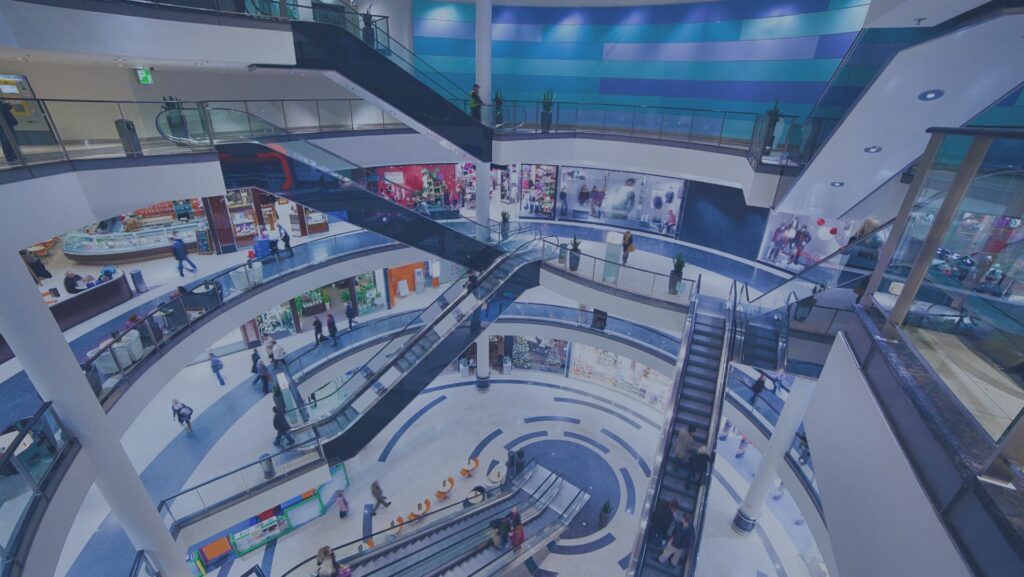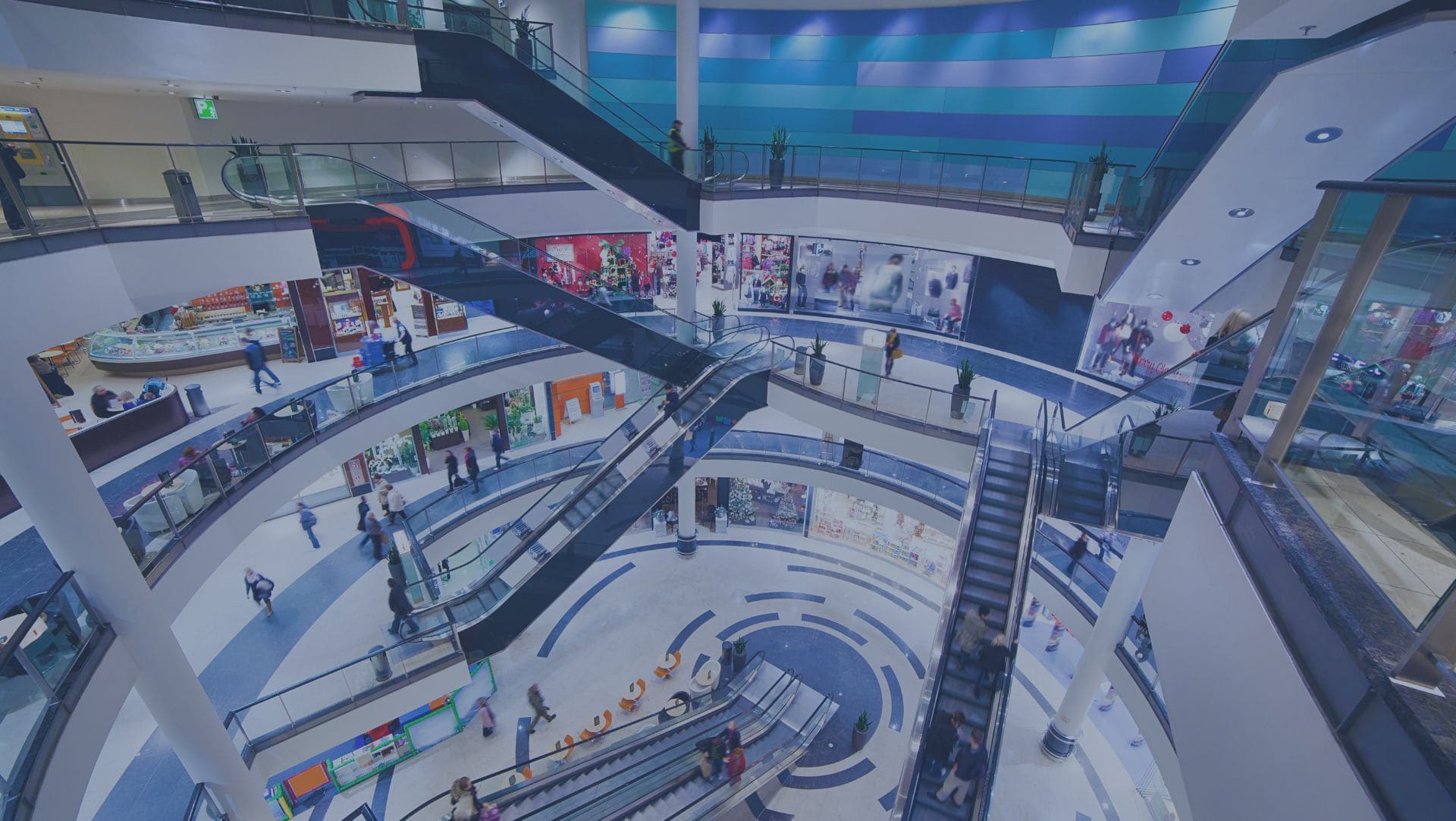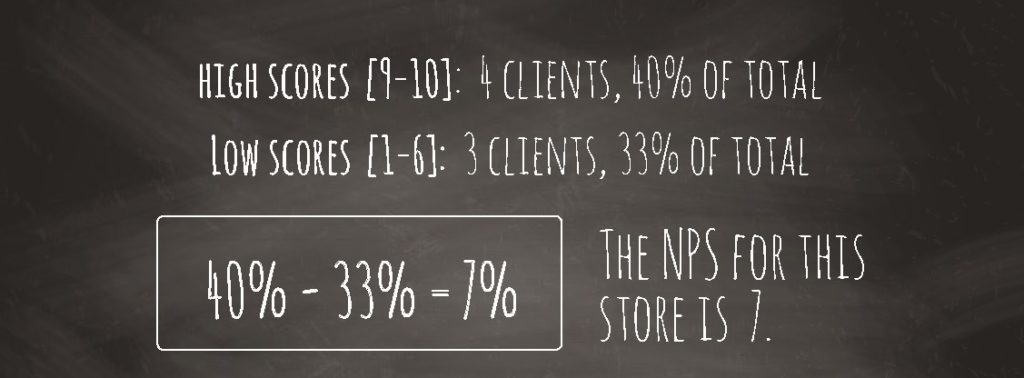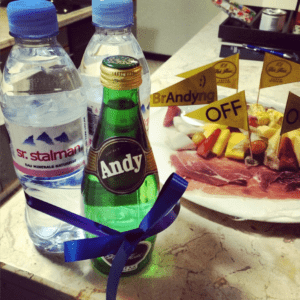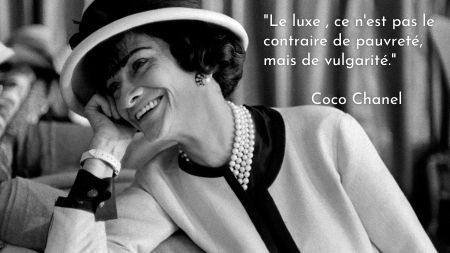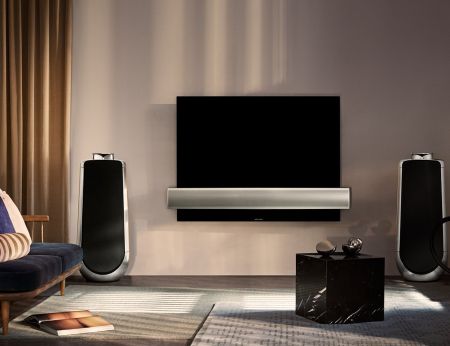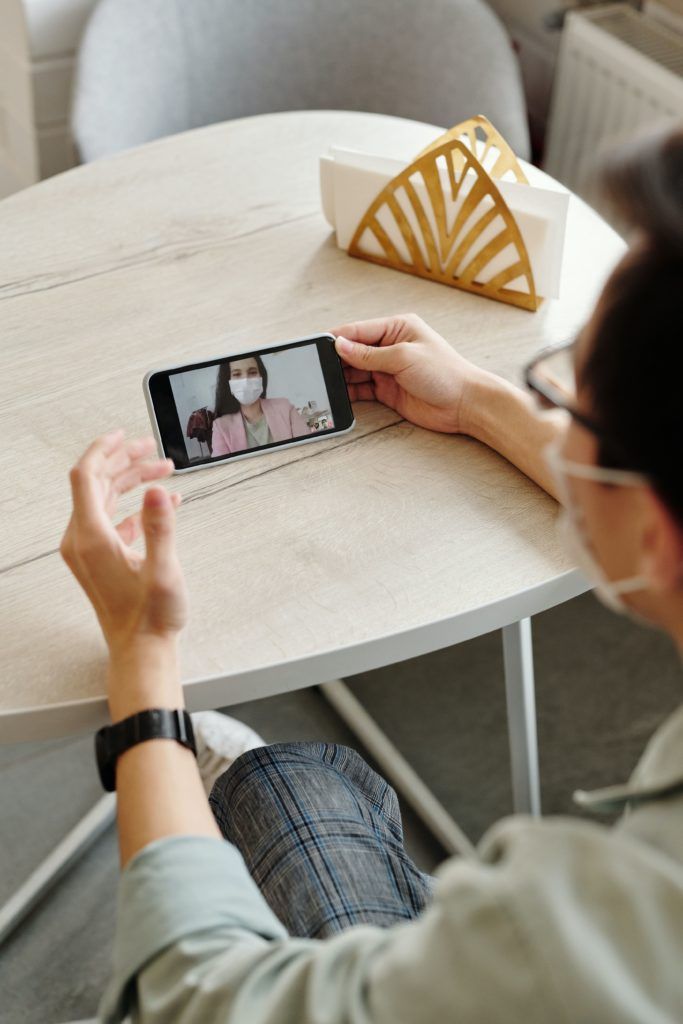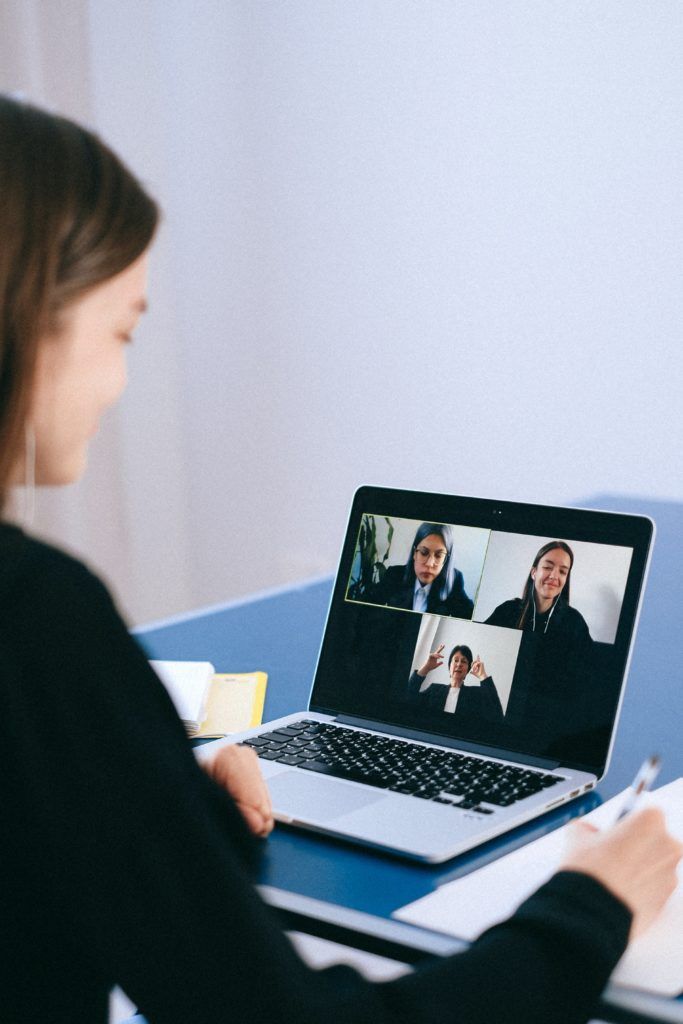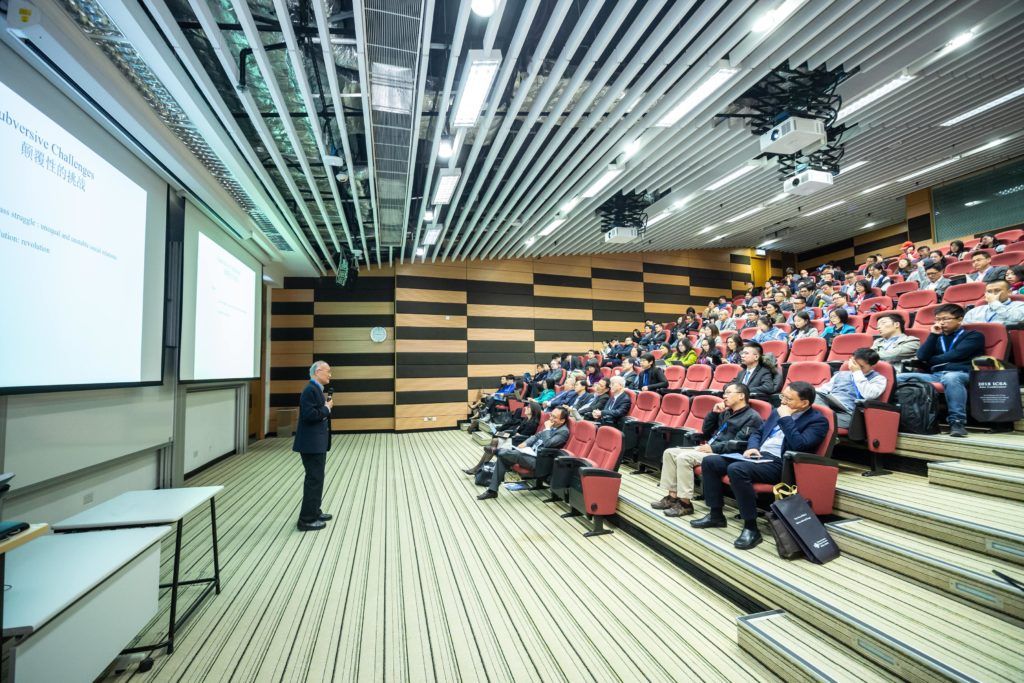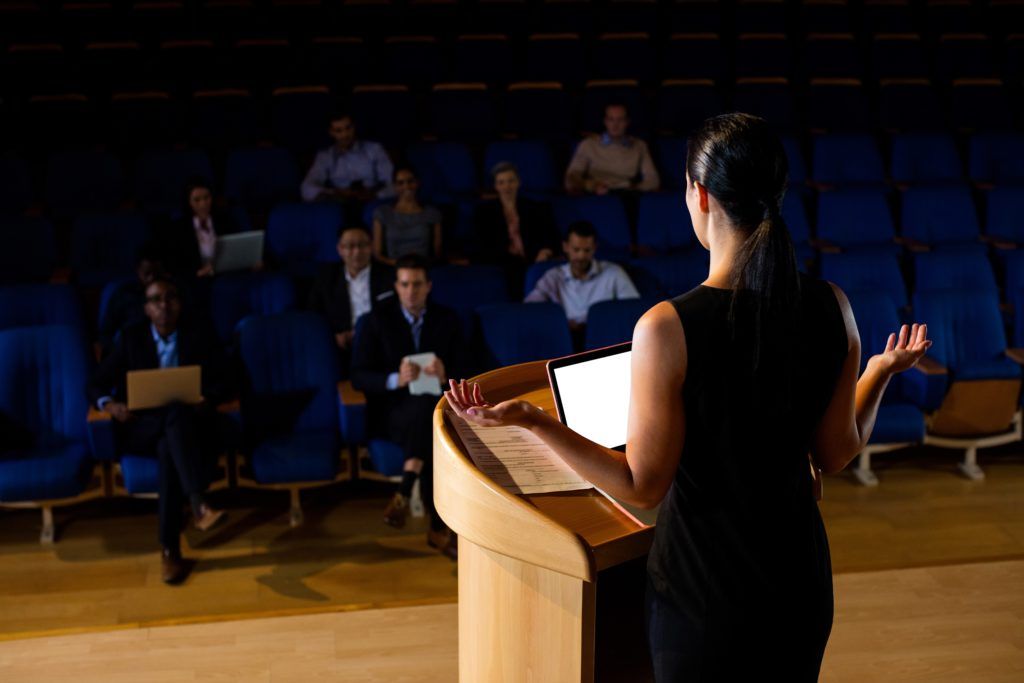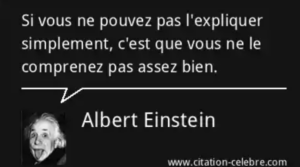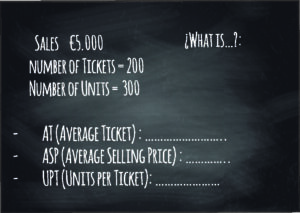“Remember, everything you need you have it inside you.”
The permanent drive to do even better in retail is similar to long-distance running. It’s perfectly reasonable for my baker to want to sell more and sell better.
Over the past few years I have developed a real love of running and I am now a member of an amateur club, Miacum. The following tips are some of the things I’ve learnt that I can take from marathons and apply to retail.
I have run three full marathons, six half marathons, around twenty 10 km races and a number of other distances. While writing this book, I have achieved my personal best time for a marathon, down from 3 hours 27 minutes to 3 hours 13 minutes, running 7% quicker over three years, and I’m trying to bring my times down even further. When I’m training and competing, I reflect, absorb and come to conclusions, and I have found a number of similarities between running and retail coaching. So, by way of thanks, here are my 42 tips, one for each kilometer (with a couple more for the extra meters), for success in running and in retail.
Km 1 – Potential
What if…? What if I could get my personal best under 3 hours 15 minutes? And if it turns out I have a real knack for running, how will I realize it? By trying, training, making plans in that direction. And if you had the potential to sing, play the piano, play chess, run a retail business, how would you realize those pursuits? Just the same, by trying.
Retail lesson 1: If you can get to 120% of your current result in terms of sales, average ticket, conversion rate, how would you do it? We all have great potential, unsuspected, unrealized. The first thing to do is to become aware of this potential, which can be done in two ways, coaching or writing about it.
Km 2 – Plenitude
To run is to feel complete, sufficient, light. In Timothy Gallwey’s book, The Inner Game of Tennis, he talks about being ‘in the zone’. What makes the best so special can be seen in the sublimation of a match between Roger Federer and Rafael Nadal, where the two players almost visibly grow, in the tensest, most strenuous moments. (if you are a Nadal fan, as I am, you might be interested in my blog “Nadal, 17 lessons after his tenth victory at Roland Garros”.) Does stress get the better of you or do you grow, like Federer and Nadal? In your way of doing things, are you complete? Whatever my mood, however tired I am, after ten minutes running I feel full, fulfilled.
Retail lesson 2: Can retail management ensure a person’s completeness? I think it can; it can help a person to feel useful. Commerce is an excellent field for personal development and offering a sense of completeness. I once met a saleswoman who had a difficult personal life (she split up with her partner, her son had problems at school, and so on), who told me: “Benoit, when I walk into the store I leave the rucksack containing my personal life at the door and enter another life which I really enjoy.
Km 3 – Paper
My coach prepares a series of personalized training plans for me, based on my targets. I have learnt to do what it says on the paper. Previously, if I saw “run 10 km” written down I would have run maybe 8 km, or if my target speed was supposed to be 4 min/km, I would have run the kilometer in 4 minutes 20 seconds, slightly slower. If it’s written down, it’s for a reason. So what would happen if you had to comply with things that you had written? This year, our company had an annual sales target. On November 18, we realized we had met 99% of the target and that we didn’t have any orders pending confirmation, something I wasn’t happy with. Nobody forced me to write this target down on paper, which includes a step up in performance over last year, but if I put my mind to it, I’ll do it. The next day, a client called me unexpectedly and asked if we started in January or December. We started the next program on November 30 and reached 102% of our sales target. No shareholder or boss asked me to do it, it’s just the habit, typical of runners, to keep going until the end, of doing what is written on the paper. After his victory in the Paris Masters, the French tennis player Jo-Wilfried Tsonga responded to a journalist who asked him the secret of his success: “My parents taught me to always finish what I had on my plate.”
Retail lesson 3: At a Retail Coaching session, we make sure that people’s promises and commitments are written on paper by the person concerned, as it gives further force to their pledge.
Km 4 – Proudness
At Miacum we have club shirts which we are all very proud to wear. Each of our times is recorded and we all feel that our performance has an impact back at the Miacum club house. This is also expressed by countries. During one of my marathons, I saw a number of families with French flags singing La Marseillaise. “Vive la France!” shouted someone on the other side. I could hear more voices join in the patriotic, fraternal encouragement. Some kilometers further, there was a Chilean flag. I went over and started their national anthem, which sings the praises of the country’s clear blue skies: “¡Puro Chile tus cielos…!” and they shouted back “¡Vamos, huevón!” – Go on man!
Retail lesson 4: In some commercial networks, employees proudly wear a red tie or a badge on the lapel of their jacket. Do you know your company’s colors? The matter of a company uniform tends to be a sensitive one in store chains. Is your company’s uniform for your sales teams elegant, or does it make them sweat in the summer? I often see companies cutting costs by asking staff to wear poor-quality uniforms in unflattering styles. Think of the club house; come on now!
Km 5 – Professor
Internet guides represent a good source of reference on how to organize yourself, get in shape and so on, but if you seriously want to do it properly, then you need a teacher. This is true when learning to run. As a coach, I feel really privileged when people give me guidance. As well as technique, teachers give you knowledge, the science that underpins the subject. How many teachers have I had who have taught me to run better? My coach, plus a number of more experienced colleagues.
The teacher-trainer has a different role to that of a coach. Teachers are experts in their field, they pass on knowledge and instruct the student. A coach raises awareness and stimulates the performance of his client, assuming that he or she already has everything that they need to improve.
Retail lesson 5: In this book we have seen that a boss can also adopt the position of a coach. These are two very different positions yet nevertheless complementary ones. A teacher is a third party and many bosses don’t feel comfortable around them: “We have a training department that looks after that.” I feel that a lot of bosses could be really good trainers. Maybe not good enough to replace a professional trainer (especially if that person is a professional coach), but certainly, when it comes to giving training on products, processes, etc, who better than your own boss, who can pass on their know-how, their experience.
Km 6 – Presence 100%
Being there at the start of an important race is a big part of the success. As Woody Allen once said, “Eighty percent of success is showing up.” Being there at the start means you’ve trained, put on your running shoes, eaten the right food, and so on. For a parent-runner it means you’ve had to organize your life, free up time four or five times a week for three months, in order to be in good shape, right in yourself and right with others.
Retail lesson 6: Being 100% present with another, in the dance with the customer, with the employee, with yourself. Smartphones, for example, are presence thieves. Some managers decide to switch off their phones during their store visits and have told us that they feel a lot more effective.
Km 7 – Pantomime
When you’re exerting yourself you can’t talk. Sometimes the coach asks you, “How’s it going?” and the only thing you can do is give him the thumbs up to say it’s all good, just like on Facebook.
Retail lesson 7: In high-performance teams, when we are working flat-out, with urgent deadlines, a frenetic pace, hyper-intense projects and operations, what symbols, what gestures can we make to show that everything’s good? Who do we look at? How do we give encouragement? Remember Marcelo’s bar? At peak times, the waiters seemed to make signs with their hands and winks with their eyes, which only they understood. They are Connected salesperson.
Km 8 – Pulse
What’s your heart rate at this very moment, while you read these lines? A runner is used to knowing what their heart rate is, to measure it, to be aware of their own rhythm: 60 beats per minute, 90, 110, 130, 160. Your heart rhythm is very important in human relations and especially in retail.
Retail lesson 8: For example, the supervisor or regional manager who comes to the store from outside will probably have a fast heart rate. Sometimes it’s impossible to match. In NLP, matching means sharing another’s biorhythm in order to facilitate rapport. To ensure good relations, we need to get used to synchronizing another’s heart beats, for example, through abdominal breathing… even at a call center.
Km 9 – Personality
In the harsh reality of a marathon, you get rid of everything that’s superficial and rely on what is essential in you – your personality. When energy levels are low, you call on your inner force, the light that shines inside you, the thing that drives your personality.
Retail lesson 9: A company with personality can stimulate the emergence and expression of each colleague’s inner force. I experienced this clearly at my favorite hotel: the Hotel Live Aqua in Lomas de Santa Fe, Mexico. When you go in, your five senses immediately awaken and the four elements unfold before you: earth (in the Zen garden), water (in the fountain), fire (with the large central charcoal brazier, visible in the kitchen from the entrance), and air (through the space and light). A brilliantly conceived combination of architecture and interior design. And the staff, were they at the same level? Yes, they were, very much so. Each with their own personality: Gerardo with his long beard and love of rock music, Fernanda with her wide grin and five languages etc.
I also remember being in an Intermarché in France with Hélène, a supermarket owner, who asked each of her colleagues what their passion was in life. She brought in a professional photographer to take a shot of each of them with their corresponding attire, exhibiting them on the wall of the store. Customers could see Robert, the butcher, dressed as a cyclist, and Nicole, who worked on the cash registers, wearing the traditional dress of Martinique. If you want a business with its own personality, stimulate it in order that its inner light shines through… along with the personality of all its members.
Km 10 – Practice, Practice, Practice
The twelve weeks before a marathon are a time of intensive practice to acquire automatisms and take the body to a whole new level. In order to make the vision a reality there is no alternative to practice and training. On D-Day, everything can change, anything can happen. For better or worse, we have to embrace the automatisms acquired, the muscle, corporal and neurological memory.
The following story (that I’ve heard from my friend Tony Quigley, a great retailer) took place in a rural village in deepest Ireland;. James was a 13-year-old boy who dreamed of joining the local theatre group. Every year he would ask the director, who would turn him down as diplomatically as he knew how. This particular year, James tried again and this time the director told him, “Well I do have a part for you, but it’s a very small role, OK?“ ”In fact your character only says one sentence, just two words – “It is!” That’s all.” James was delighted to have this first opportunity, his big break as a thespian. For weeks he practiced in front of the mirror: “It is!” in a conquering tone, with a romantic sigh, or in a voice laced with suspicion. His big day arrived and the village hall was full. James could barely contain his stress. In just a few seconds his moment would come, the highlight of his nascent career. He appeared from behind the curtain, looked out at the audience and said: “Is it?”
Retail lesson 10: Even with practice, things can turn out wrong, so keep practicing, keep training. Practice your sales through role plays. Practice the most difficult of them, with the angriest customers. If you find it hard to give feedback, practice that. If you want to improve the quality of your briefings, practice, practice, practice. Or do you want to have to improvise forever? Why should retail be any different to sport or art? Practice, practice, practice.
Km 11 – Papa!
My three sons were standing along the side of the road on my first marathon at the 8 km and 41.5 km points, together with my wife: “Allez, papa!” My parents were there to support me on my second marathon. As the kilometer of the race passed, I knew I had an appointment to keep with them.
Retail lesson 11: Who’s supporting you from the side of the road on your professional life in retail? Do your family know about your projects? Working in or for stores is demanding, with schedules that are often uncomfortable. Do your loved ones know how you make a living? If you can’t give your son a kiss when you get in late from work because he’s already asleep, do you at least tell him what you do? Have you ever taken him to work with you? Is there anybody who has left the side of your road who you would like to see return? What conversations are needed?
Km 12 – Public
I decided to make my project public. I’m going to take up running. Colleagues, friends, relatives, neighbors, everyone ended up knowing about my project.
I remember a meeting at my son’s school which my wife had suggested I attend. She had a prior engagement and so I told her that I was ‘sure’ I could make it. Then I remembered my training plan. That day I was set to run 17 km and, by coincidence, the school was exactly 17 km from my office. My route turned out to be more like orienteering than a normal run. I had to take my shoes off twice to cross rivers, crawl under a barbed-wire fence, and so on. A hall full of parents witnessed a disheveled runner arrive a little late, with his tracksuit and shoes covered in mud. Nevertheless, I wasn’t embarrassed in the slightest. A little proud in fact. A runner’s pride. I have managed to incorporate running into my daily routine. 70% of my work involves taking a flight and I never check in a suitcase. In order to move away from the typical image of the executive, crossing airports and stations with a bent back and one shoulder much lower than the other due to the weight of the laptop computer case, I now use a more ergonomic backpack, with a padded compartment for my Mac and books and another for my clothes. Since I started running, I have had to find space in this high-tech precision set-up for my running shoes. A real puzzle when flying low-cost!
Retail lesson 12: When we feel comfortable doing an activity, we say and show it publically. However, how many professionals working in all areas of retail have I met who never talk to families and friends about their work, seeing it as a necessary evil, a sort of punishment. Does your work for your store enhance you or dwarf you? Do you say where you work in public? Are you proud of your work? How about your staff? Are you able to make those that you work with feel proud as well?
Km 13 – People
Thousand of runners; each one with their particular story, their work, their profile, their roots… You really feel each person’s individuality. By the side of the road, the public were amazing – elderly men wearing berets, children holding out their hands so that the runners could give them five as they went past, photographers trying to record the perfect moment. Sometimes I would raise my eyes four or five meters further to catch people’s eye, receive their energy. Everyone had a personality that reached out to those running. I knew that Jon (a valued client) and Alex (my editor) were also among the runners.
Retail lesson 13: I could be a baker or work behind the counter at McDonalds, yet I can still see each person as part of a continuous flow or as someone with their own personality, preferences, memories, eye color, tone of voice and legitimate expectations of being treated as a unique individual.
Km 14 – Purpose
Why run? I run for pleasure and to look after my health, to go to work in better shape. Why do we do things? When I imagine myself in my twilight years, with my grandchildren asking about my past, perhaps I’ll tell them about marathons. Why will I have run them? I’ll tell them that I saw them as a metaphor for life, a desire to excel.
Retail lesson 14: What is your ‘reason why?’ When many French clients call us, they ask us to help their managers to “donner du sens” – give some sense – allowing them to develop their ability to explain, provide meaning. We already saw this in the quote from Antoine de Saint-Exupéry. Those with N personality types particularly need to ‘know why’ in relation to their projects.
One day, during a refection workshop, we asked a group of retailers the ‘why’ of their professional project. What will the speech they give on their last day at work be like, maybe with a glass of champagne in their hand, standing in front of their grandchildren? Franck, an outstanding retailer, read us the speech that he had just prepared: “I did the best I could to provide my neighborhood and my city with healthy products. I always tried to keep a smile on my face and saw my good humor as a real value for my customers and other people in the area. I contributed to the social fabric through my store. During the hard times I always tried to keep prices low for my customers. Together with my wife, this work has allowed us to educate our children, your parents.” Imagine the last day of your professional career in retail. How would you explain your ‘why’ for the things you have given?
Km 15 – Prudence
The Tuesday before my last marathon I felt a slight muscle strain in my calf. That day I didn’t train. The day of a race, the temptation to start fast is really high. Your body is conditioned to discharge energy. Prudence.
Retail lesson 15: I have met a lot of store and regional managers who put brutal pressure on staff, every week, every end of month, in order to ensure the target result for the period. The challenge begins on Day 1, the minute that the store opens, with the manager visualizing the KPI after only an hour. Solid, detailed work, on well-ploughed land, limits the need for a big push in the final few minutes, a strategy which is often counter-productive. Prudence means knowing which battles to fight.
Km 16 – Punctuality
If you turn up for training three minutes late, the others will have already left on the 5 km warm up. In a race, the preparation phase has a huge bearing on the result. The secret is to arrive at least an hour early, to drink the race in emotionally, the temperature, the music, the energy of the other runners.
Retail lesson 16: “Arriving on time means arriving too late”, a hugely experienced coach and colleague once told me. If a student of mine turns up late for class, it’s the last time it will ever happen. If a store opens at 10 am, I often see sales staff arriving at 10:02 or even 10:10. It is actually one of the more common ‘pending conversations’. Briefings usually take place at 9:50 am, to ensure that everyone is up to speed and ready for the retail starting pistol at 10 o’clock. In both running and retail, one of the basics is time.
Km 17 – Projection
On my third marathon, my goal was to finish under 3 hours 15 minutes. I imagined myself a thousand times running down the home straight at the Cartuja Olympic Stadium in Seville, seeing the figures on the electronic clock reading 3 hours 14 minutes. In the weeks before the race I watched videos on YouTube showing the entrance into the stadium. In the four days before the race, I found it really hard to concentrate on other matters. My spindle neurons were lit up and training hard.
Retail lesson 17: How about you? Are you visualizing a UPT of 2.5 if today it’s 1.8? Are you mentally prepared? Have you visualized? We have seen how with spindle neurons, the first step toward success is visualization, the emotional and sensorial connection with achievement. This is biological preparation for success. The individual comes first, and from there to the group, through team communication.
Km 18 – Preparation
12 weeks, five training sessions a week. Planned down to the last millimeter. This is what marathon preparation involves. When preparing for my marathons, I have run in Paris, Vannes, London, Madrid, Copenhagen, Mexico City, Santa Cruz de Tenerife, building up a portfolio of sensations and emotions. That Christmas Eve in Copenhagen at 8 pm, for example, the snow had melted and it was safe to run. Looking in through their windows I could see the Danish families sitting around the dinner table, eating duck and red cabbage, the Christmas scene completed by the smoke coming out of the chimneys into the cold night air. Or in Paris, running along the banks of the Saint Martin canal, watching Parisians return home. But also my solo training sessions, generally at night, leaving my family alone to have dinner without me. In total, five times a week for three months. Always with an image in my mind – a tunnel leading to that huge stadium in Seville!
Retail lesson 18: You can’t improvise where success is concerned. Proper training is essential. It’s the same with professional preparation and training, in companies and in stores. What would professional effectiveness and the self-fulfillment of retail professionals be like if their training, their preparation for the challenges they face, were as stringent yet stimulating as the training required for a marathon? As Goethe said: “At the moment one definitely commits oneself, then providence moves too.” How do you prepare for success in your stores? Is training a cost or an investment for your company? Are your new collections, special promotions, the launch of new products, accompanied by an organized preparation?
Km 19 – Paraphernalia
The equipment you use is essential. Running shoes that are too narrow mean your legs will start to falter around the 30 km mark. When I run a marathon, I am equipped with my Garmin GPS, my Asics running shoes, technical socks, shorts with a back pocket that contains my car keys, a gel and a cereal bar, plus a cap and sunglasses. I’ve tried out my kit on a number of occasions, with runs of 20 km to 30 km over the past few weeks. For a few kilometers of the race, I run alongside a man wearing minimalist sandals. Apparently this is fashionable among indigenous peoples in Mexico, requiring the runner to adopt a very upright posture, but in general, his material is sophisticated.
Retail lesson 19: To what point do we give the runners in our stores the right kit, the tablets to improve sales and offer the best purchase experience? We need to give them all the information, the PoS, a uniform in which they can feel really good. Believing in a project means investing in the right material and trying it out to ensure performance. Retail is detail, and all details count.
Km 20 –Pronounce
In the weeks leading up to my three marathons, I would say what my goal was. For my first marathon, “firstly finish, and if possible, in under 3 hours 30 minutes” (I finished in 3 hours 27 minutes). By the third one, my goal was to finish in under 3 hours 15 minutes. I would say these challenges out loud and write them down. “Ce qui se conçoit bien s’exprime clairement”, “Whatever is well conceived is clearly said”, said Nicolas Boileau. Today, thanks to advances made in linguistics, for example through Noam Chomsky (who influenced NLP), we know that the reverse is also true and just as useful. “Whatever is clearly said, becomes well conceived.” The simple act of verbalizing a goal, and through this, controlling its linguistic register, its nomenclature, its jargon, represents a stage on the route to success. This invites us to express, to pronounce. Since my first races in 2012, I have had to assimilate the ‘jargon’ of running: increases, splits, heart rate percentages, speed indicators, and so on.
Retail lesson 20: However, the top-down style means that employees receive their goals without ‘incorporating it’, without taking it to their territory, in their own words. It is an order from their boss, which finishes with an ‘understood’?. The employee falls into ‘agreed syndrome’: “Boss, I might be nodding yes, but I’m thinking no.” The enormous change that comes from stimulating employees to set their own goals, in their own words, to say them out loud and write them down, is clear to see. In fact, employees tend to be much more ambitious than the plans imposed on them.
Km 21- Plan
However powerful the vision might be, a detailed plan is needed with its small goals. At my first marathon, my goal was to finish in under 3 hours 30 minutes, which meant running each kilometer in 4 minutes 30 seconds. When I hear the starting gun, my small goal for the first 500 meters was to find my rhythm and maintain it.
Retail lesson 21: Coaching is all about raising awareness and taking action. Taking action takes the form of drawing up an action plan. Good intentions are not enough. A powerful vision begins with a first step in the right direction.
Km 22 – Priorities
Preparation for a marathon means making major changes to daily life. On my business trips I take running shoes and on the four days before a marathon, I avoid making professional commitments that require concentration, because I know that my mind can only deal with a single priority: marathon. We can’t deal with ten priorities simultaneously.
Retail lesson 22: Retail is detail and we could possibly find ourselves inundated with details. If my priority as a regional manager is to increase my conversion rate, then that is the priority, not any other. This is especially true when trying to communicate “the UPT of 3 for this year” or “20 in 20” (20% profitability in 2020). Perhaps the role of the retail leader is just this, to define priorities.
Km 23 – Pace
When I’m looking to set a new record, I apply a faster pace than in previous races. At the 10-kilometer point, I’m overcome with a doubt: Am I pushing myself too hard? Right there I listen to what my body and inner knowledge tell me. This knowledge, applied with insight, is needed to go beyond the comfort zone, looking to explore areas which may be full of promises, and facilitate decision making. At this 10-kilometer point, I tell myself: “Benoit, your mind and body know you have to complete 42.195 km. Right now they’re telling you that you can go at this pace. Listen to your voice”. Calculations and plans are one thing, knowing how to listen to your inner knowledge is something else entirely.
Retail lesson 23: How can we stimulate this benevolent and personal force and what resides in our interior, that gently tells us our limits, encouraging us to go further and helping us to make good decisions? Sometimes in training and workshops, we practice meditation and mindfulness, and the exercise has a notable impact on people who are not very accustomed to listening to themselves.
Km 24 – Progress
At the 35-km mark, with the tiredness and temptation to think that “this is all too hard”, I said to myself: “Don’t look for extraordinary things, just go one step at a time.”
Retail lesson 24: One step at a time, one customer at a time, one smile at a time, one sale at a time. 42,195 steps, 42,195 customers a year, around 115 a day. Every step is another rung on the climb toward success. Living each sales as an opportunity to progress, to shine and to make someone else happy. Just one misplaced step and I could twist my ankle. A single neglected sale experience can destroy a reputation.
Km 25 – Perseverance
“From 1 to 100, how committed are you to your goal?” asked the teacher.
“99%,” said the student.
“At 99°C, water doesn’t boil,” replied the teacher.
The extra degree which takes water to 100°C can drive pistons, move heavy machinery, activate complex engineering projects. In a race, a second slower each kilometer means 42 seconds slower at the finish line, the difference between success and failure. At the 41-km mark, athletes realize that they’re almost running on empty, giving their all.
Retail lesson 25: A retail company I know had got used to being satisfied with 95% achievement. On the 30th of each month, there was a little stress as to what management would say, but there was no special reaction to redress the situation. Let’s go for that €1,000 that we’re short! Let’s go for that record time! Let’s go for one degree hotter that changes the nature of water and allows it to drive huge machines! Commitment leads to perseverance, the search for change, the fight for success.
Km 26 – Performance
KPI (Key Performance Indicators). I have spent hours on end staring at Excel spreadsheets, trying to convert ‘3 hours 30 minutes’ to a time per minute. (The secret of the calculation is to convert the sum to seconds. Otherwise, the base-60 of minutes and hours can drive you crazy.) Buying my GPS Garmin watch marked another milestone. I still needed a few weeks, maybe months, to assimilate the various indicators – heart rates, speed, total time, split times. I still do! Having a target is a good start, as necessary as it is insufficient. Achieving an ambitious goal means knowing your split times and understanding two (a maximum of three) variables or indicators that are the keys to success. In a race, the time per kilometer and heartbeats per minute.
Observation represents a complement to or validation of objective statistics. Observation of my legs at the start tells me I can accelerate at a point where the time factor was not an appropriate indicator. At the end of the race, observation of my drained energy level makes me afraid I will collapse, the famous ‘wall’ (the point of no return at which strength suddenly abandons us), yet my watch would reassure me (to a certain extent). A professional coach would not say, “You look a bit weak today!”, but rather “You’re running at 5 min 30 sec/km. Can you bring it down to 5 minutes?”
Retail lesson 26: A retail coach does not say “Sales are too slow”, but rather “Your average ticket is €15. When do think you can improve on that and how?” The use of figures might seem intimidating. My experience coaching 3,000 retailers over the past few years has confirmed that many people have a complex when it comes to numbers and do not dare to say that they don’t understand something, or even that they don’t understand anything. “What cannot be measured, cannot grow. And what is measured does indeed grow.” The role of the coach is to ensure that people know how to verbalize their objective and key indicators. And thus the retailer becomes the teacher, while IT systems, PoS and Big Data are sources of serene projection.
Km 27 –Pack
Set off together, live together (sort of). Running is like singing or praying: alone is good, although doing it in a group is incomparably more intense. In order to train for my marathons, I joined a running club in Las Rozas, near Madrid, called Miacum, as I have said. A friendly atmosphere reigns there, offering mutual support and the pleasure of running together. There are about 30 of us, men and women, with a wide range of levels yet with a common goal: running for pleasure and to get better. Curiously, I noted that on Tuesdays (training day) and Sundays (day of our morning run) I ran faster than on other days, when I ran alone. I find it hard to run under 5 minutes per kilometer when alone, yet when I am with the group or in a race, I can bring it down to under 4 minutes per kilometer. What is this magic of the team? Neuroscientists call it neuronal or social resonance. Our brains enter a state of resonance when we realize we are doing something as a group, as a pack. Profoundly and essentially, human beings need the presence of others.
Retail lesson 27: The coaching of a team, interaction between members, is at least as important as individual coaching. A professional organization needs to protect the energy that the group exudes. Will an individual draw extra strength from the group or, on the contrary, will it prove to be a paralyzing ordeal? For example, in retail networks where the store or agency manager is alone, what ritual should they or their supervisor adopt to ensure fruitful exchange between members? How can we ensure that at these meetings, the energy is positive and productive, something which can readily be shared? And from that point, how to share an adventure, a race, with a customer, even though it only lasts thirty seconds? To do so, we need to work hard on group dynamics and communication rituals with head office and between professionals, as well as our rituals with customers.
Km 28 – Ponderousness
Running means getting rid of everything that is superfluous, unnecessary ballast, keeping only what is really essential. Nurturing that inner, that simplicity, illuminates one’s path. To be as light as a feather. A pair of running shoes and off you go. In a society based on satiety, always seeking more, runners look for simplicity.
Retail lesson 28: Sales professionals in the 21st century are no longer the arrogant people they were sometimes in the 1990s, clambering over others in an attempt to show off, to coax and cajole, but rather people who really do live their relationships with others in the ‘here and now’, sharing that 1.4-meter sphere. “There is nothing more innovative than being yourself,” as my friend and teacher at IE Business School Pascual Montañés puts it. In a society which is increasingly dematerialized, both the transaction that lasts 10 seconds (such as buying a newspaper or a loaf of bread) and the one that lasts a few days (buying a complete new kitchen, for example), customers seek the advice of a sincere, straightforward person. As Robert Dilts said, “The distance between you and someone else is the same as the distance between you and yourself.” Emmanuel, a store manager at a prestigious chain of garden centers, told me that on Fridays, during the lunch break, he would go out for a run with the colleagues who wanted to join him, eating a sandwich in the 10 minutes they had left after showering. Happy customers at that garden center on Fridays!
Km 29 – Popular
Many marathons include the word ‘popular’ in their name. It is true to say that a marathon brings together people from all walks of life and countries around the world, a mix that represents a great strength. It’s a free attraction for the spectators that make the race even more popular.
Retail lesson 29: 15% of the active population work in retail. Sometimes it is not those from the highest social class that work in stores. For this reason, there is nothing more important than having good bosses, with coaches in stores, to help people to grow from their popular origins. Retail as marathon welcomes everyone. It’s popular.
Km 30 – Pleasure
Children’s pleasures: games of tag, endless soccer matches till way past bedtime, playing barefoot on the beach… Running, like singing, takes us out of sadness and depression and into the joy of being alive. Running is feeling your own body, getting to know it better through sport. Running at night after a day at work represents an initial effort to overcome fatigue, weakness, sometimes rain and cold. However, after five or 10 minutes, the pleasure of running, the mental freedom, the sensation in your body, your muscles, the breath of life that connects back to the pleasure you had as a child, playing and running.
It’s a genuine pleasure to run with 15 other men and women all wearing caps and gloves. Facing up to the challenge of early starts on frozen Sunday mornings, while families are still asleep. Giving thanks for the magic of the winter sun appearing over the distant horizon, hearing the heroic impact of feet on wet or frozen or dry earth. Antoine de Saint-Exupéry said, “All grown-ups were once children… but only few of them remember it.” Running is remembering that we were once children, and that in many ways we still are.
Retail lesson 30: In our work, whether in seminars or in the field, when we invite managers to play, many of their problems solve themselves. Everything becomes easier. Why should business management always be a serious matter? Particularly in retail, good humor and positive energy, perhaps through retail games, are essential to good results because customers notice.
Km 31 – Pain
That wet Sunday, accompanied by wind and hail, I passed the finish line in my second marathon in a disappointing time of 3 hours 31 minutes. In my home town of Vannes, with my parents, uncles, aunts, nephews and nieces, giving me their support, I missed my personal best by over three minutes. At that moment I felt like a loser. I know the adverse conditions were against me, but still, I had failed in my attempt to improve on my personal best. After the shower, I began to reconsider. I had learned a lot, I’d really enjoyed the race, I handled the suffering and I was still really keen to run again, this time bringing my PB down (something that did happen in fact, three years later). Another look at my stats, I saw that at the 3-km mark, I ran too fast; I’d clipped my own wings and it was no one’s fault but mine.
Retail lesson 31: In the company, in store management, what do you do on the last day of the month, approaching your finish line and short of your 100%? What does losing mean to you? Within an environment of continuous improvement, do you know how to ‘swallow’ an adverse result and learn from it? As an employee or businessman, I have lost many times. However, over the years, I have learnt to put it in perspective, to take a deep breath and carry on.
Km 32 – Power
Taking control is being able to distinguish what is in my hands (the pace I run at) from what isn’t (weather conditions, for example). I don’t have power over the weather, but I have power over what I do with it.
Retail lesson 32: I must have heard the following a thousand times in stores: “Of course, it’s the rain…”, “Well, in this heat…”, “What with the economic recession…” and so on. I can’t do anything about the rain but I can control my decisions. I remember something a taxi driver told me in Stockholm, one icy morning in December, when I expressed my surprise at seeing some children playing in a public park: “There’s no such thing as bad weather, just bad coats.” Take control, wear a good coat. Take control, make decisions. Everybody can take control, every day, deciding on their attitude, for example.
Km 33 – Price
The entry fee for a marathon usually varies from €20 to €50. How much is it worth? How much are all those “Come on Benoit!” cheers worth (because they can see your name on your back)? The good will of the spectator encouraging runners from the roadside, expecting nothing in exchange. How much was my sister’s presence at the 38 km mark worth at my secnd marathon?. If I could put a value on my experience, the price would disappear, because the value would exceed it.
Retail lesson 33: Many salespeople don’t know how to sell value. Their products seem too expensive and they become embarrassed, because they measure it with their own yardstick. I’ve seen this a lot, for example, in the luxury goods sector. However, the experience you are giving your customers is so special that the value exceeds the price, and everything becomes affordable. Do you know how to sell value? Nothing is affordable if the seller cannot sell value.
Km 34 – Prize
I passed the finish line of Seville’s La Cartuja stadium, I got my medal and lay down on the track. The late-winter sun warmed my face. An infinite sense of happiness came over me. This is the finest prize imaginable – the prize of a goal well achieved after a huge effort.
Retail lesson 34: Occasionally, we get asked if the prizes for our competitions and retail games should take the form of a large sum of money. I believe that, although we all like big prizes, sometimes it’s enough to distinguish that the goal has been achieved. The medal, which may have cost about €1, has great significance for me. José Luis, an area manager for Springfield, decided to award the store with the best conversion rate with a trophy that cost about €5. What was its real value though? I would ask retail coaches to think about the perceived value of the prizes that are awarded. How much would it cost you to let the competition winner leave two hours early?
Km 35 – Proteins
Personal improvement and performance excellence require us to think again about the food we eat and healthy lifestyle choices in general. It might seem a small thing, but for the first time in my life I’m in a group in which nobody smokes. A lot of my friends smoke, and I have nothing against it, but I greatly admire the progress made in European countries in this regard over the past 15 years, banning tobacco in public places – a small detail but nevertheless, one that strikes me as important.
I remember one night I felt ill and I was advised to stay in bed. Regardless, I went out for a run and returned home feeling a lot better than when I’d left. For my third marathon, I decided to look into a new area – nutrition. I cut out cow’s milk from my diet, gave up Pringles and similar toxic snacks, replacing them with dried fruit and nuts, and started to eat organic food, with spectacular results in terms of my weight and wellbeing. What most surprised me was that when I told those around me what I was doing, I realized that many of my friends were doing the same, in particular most of my fellow coaches at CapKelenn.
Retail lesson 35: I remember a well know store chain at which, of the 20 or so store managers, two thirds smoked at least a packet and drank four coffees a day. None of them did any sport or cultural activity during the week. As a result, they were evidently at risk from a range of psychosocial phenomena – obesity, a lack of concentration, depression, back and neck problems, difficulties in personal relationships, etc. After we introduced a few retail games, they told us, “We haven’t laughed so much together for years!” The body matters in retail. It implies physical and mental wellbeing, through good nutrition and other areas.
Km 36 – Protocol
Before a marathon, each runner prepares their things the night before, always following their personal protocol. As both individuals and as part of groups, we need our protocols, rituals, activities that we always do in the same way that ensure we remain calm.
Retail lesson 36: In retail management, what are these protocols, these rituals that organize our activities and keep us calm? Team briefings, individual coaching sessions, sales observations, feedback moments are protocols and rituals which pave the way towards success in the store.
Km 37 – Path
Running involves putting your right foot in front of your left foot and then your left in front of your right, allowing both to be in the air for a moment. As simple as that! Running is all about creating that creative disequilibrium, feeling that sense of vertigo for a brief moment that only movement can stabilize. If not, try standing on one foot like a flamingo for five minutes. Nothing great can be achieved without that initial imbalance, that first jump into the void. Dare to abandon certainty, to stop having both feet anchored in beliefs and convictions. Move toward your target, your vision. One day, having seen what I did for a living, my fellow runners from the club asked me for a private session. I shared my 42P’s for success with them. A new member of the team was there, Sara Andrés. She is a Spanish Paralympic champion, a woman with a real spark, a great sense of humor and drive to always go further, which will undoubtedly make her a great conference presenter. Her motto is “I’d rather be missing a foot but know where I’m going.” If you take a look at her website you’ll understand why.
Retail lesson 37: In retail, the Point-of-Sale world is one which is experienced standing up, in movement, in the flow. The status quo does not exist. If you don’t move forward, you go backwards. Modern neuroscience has shown how the body’s movement improves the quality of how we reflect on things. This is how Steve Jobs held his most strategic meetings – inviting others to go for a walk in the park. And so, I go out running or dancing in the hours and minutes prior to an important conference (and all conferences are important). Sedentary work, particularly in an office, leads to clogged arteries, while moving ourselves allows us to improve how the team works. Western culture is less prepared than eastern culture is to recognize this connection between body and spirit. If you need evidence of this, look at the Tai Chi groups in Shanghai parks.
Km 38 – Pugnacity
In a marathon, you will always find someone faster than you and someone slower than you. In fact, at our club, Miacum, four of us have a similar level, and from the start, I always wanted to beat Silvano. When I set a new 10 km personal best, he sprinted to beat me. This healthy rivalry helped us both, as well as bringing us closer together as friends. Another time, my eldest son Adrien, signed up for a cross-country race when he was 17. I was leading and, 100 meters from the line on the last bend, I looked over my shoulder and saw him some way back, looking tired. Soon after, I started to hear someone behind me, clearly accelerating. Adrien passed me and beat me. What was his motivation? Healthy competition that drives determination and perseverance. What’s more, we are all competing against ourselves. We live the race and feel that ‘pleasure from suffering’. As we progress, there can be real motivation from beating a friend or, during a race, overtaking ‘that guy in the yellow top’ who is 100 meters ahead of me.
Retail lesson 38: With CapKelenn Retail Coaching, we invite retail chain managers to coach on this healthy basis. Because commitment and responsibility are, by their very nature, individual. Competitiveness is one of the ways we stimulate improvement, thanks to our tenacity, which are healthy, constructive emotions; while envy is destructive, toxic emotion. When the above is applied within a context of mistrust and harsh penalties, any initiative in this direction will be misinterpreted and be counterproductive, as comparisons get turned into envy.
The first role of the manager-coach, the retail-coach, is to generate a context in which each member can find an environment in which to improve and go further. Competing means establishing a clear, safe framework in which each person can improve themselves and others. We can see two extremes in this regard. On the one hand, those points of sale that are afraid to use individual, transparent information, in the fear that their employees will ‘compete’, thus creating a bad atmosphere. While on the other, those who will use this information but in a counterproductive way, for example, confusing benchmark (a productive point of comparison) with a harsh sense of repression, with the subsequent cost in stress and workplace paralysis. Healthy competitiveness in a safe context is a stimulating factor that drives us to improve.
Km 39 – Proxemics
When you run, you naturally place yourself in relation to others. Occasionally, when you are running into a headwind, you drop back behind another athlete for protection. In any event, you always leave a space between you and other runners.
Retail lesson 39: In the dance with the customer, what distance should I be from them? In front of them? By their side? In my interpersonal sales or management relations, I have learned to coordinate with them. This is proxemics – the study of how we use space – applied to retail (see more in my first book, Retail Coaching).
Km 40 – Perfection
I like to watch my fastest, most experience club mates. After their runs they always say they could have improved. Perfection does not exist, neither is it a positive thing. What we should be looking for is excellence. Perfection leads to dissatisfaction, while striving for excellence in sport is a constant path toward achievement and improvement.
Retail lesson 40: How many managers have I seen suffer in retail because they want everything to be perfect, something which is impossible? Perfection excludes pleasure and enjoyment. Excellence stems from self-esteem, confidence and a continuous drive to improve.
Km 40 – Petit
During a marathon a small runner, about 1.40 m tall, overtook me and beat me. In a race, the important thing is not the length of your legs but rather the motor that moves them.
Retail lesson 40: During my years in retail, I have known all kinds of sales people and store managers: tall and small, blondes and brunettes, thin and more well-built. While in some sectors, appearance can have greater or lesser importance, retail talent can spring from anyone. I remember Alain, a floor manager who was no more than 1.55 meters tall. His colleagues occasionally poked fun at him. Nevertheless, with his style, effort, humor, posture and authority, Alain more than made up for his modest stature.
Km 41 – Panorama
Training for big races gets you out in the natural world and allows you to discover some beautiful surroundings: countryside, mountain, beaches…
Retail lesson 41: Retail professionals tend to inhabit an urban environment. Our day to day work in offices and stores offers us few opportunities to experience the great outdoors, although studies show that it helps to inspire ideas and connect better with yourself.
Km 42 – Positive
We have already seen how thoughts precede action. In two of my three marathons, between 32 kilometers and 35 kilometers into the race I felt that my strength was waning. My thoughts quickly turned darker and I was close to becoming overcome with despondency. That was where my experience with NLP, thought control and positive visualization really helped me. When my body starts to cry out that it can’t give any more, an inner voice tells me, yes it can, filling my mind with mental images, of the tunnel leading into the stadium.
Retail lesson 42: In a retail daily life, there are many reasons that may make you despondent – pressure from customers, long working hours, targets not reached, unpleasant colleagues and so on. How can you use an experience taken from sport, or from people that inspire you, to move forward? I am responsible for what I think, and I am more than capable of coming up with a new thought. Nurturing the positivity of our thoughts is the cornerstone of positive psychology.
The final meters…
Km 42.100 –- Praise
Runners use up a lot of energy, yet also feed from it, and not only with the food they consume during a race. The applause from the public, the shouts of “Come on, Benoit!” gives us all the mental energy we need. Sometimes I even ask for support and their applause is twice as loud. After a race, I know I will receive the praise, personally or on our WhatsApp group, from all my fellow club mates.
Retail lesson 42.100: At your meetings, your briefings, do you praise your team? Do you applaud? How do you recharge the energy that has been spent?
Km 42.195, the finish line – Pionner
I will never finish first in a marathon, I will never beat the world record (today the top runners are trying to break the two-hour mark), although I was the first in my family and my group of 14 runners to finish in under 3 hours 15 minutes. It is perfectly possible to finish first if you bring in the limits.
Retail lesson 42.195: A store might not lead the way in sales, but it can still come first in terms of digital orders penetration, conversion rates or UPT, without even knowing it. Being first, or approaching that line, represents a powerful driving force. A good coach knows how to set those limits, to make the world smaller, in order to define who comes first, the store or the employee. Allowing them to celebrate their success and give them the support they need to keep getting better, capitalizing on “small” victories.
To sum up:
42 km and a few meters further. 42 ideas plus a couple more which I hope the reader will find useful.


